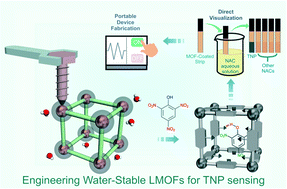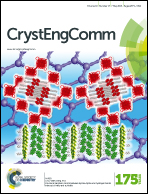Engineering metal–organic frameworks for aqueous phase 2,4,6-trinitrophenol (TNP) sensing
Abstract
2,4,6-Trinitrophenol (TNP) is a highly explosive molecule that is also widely used in industrial processing on a large scale. During synthesis, processing and disposal, TNP is released to the environment especially to water streams, contaminating ground and surface water. TNP and its biologically transformed products like picramic acids have been identified as highly toxic species to biota and may lead to chronic diseases such as sycosis and cancer. Thus, aqueous phase detection of TNP becomes an imperative aspect for the design of any potential sensor. Metal–organic frameworks (MOFs) have emerged as an important class of sensors owing to their permanent porosity, designability and variety of signal transduction pathways. Luminescent MOFs (LMOFs) have shown great potential as sensors for various nitro explosives by modulation of their luminescence behaviour in the presence of nitro explosives. Most of the LMOFs detect nitro explosives in the vapour phase and/or in organic solvents while aqueous phase detection is rarely investigated. Herein we present recent developments in the area of LMOFs for aqueous phase TNP sensing and discuss strategies used to improve the sensing performance. Finally, based on our perspective, important aspects of LMOF performance needing immediate attention for future developments are provided.



 Please wait while we load your content...
Please wait while we load your content...